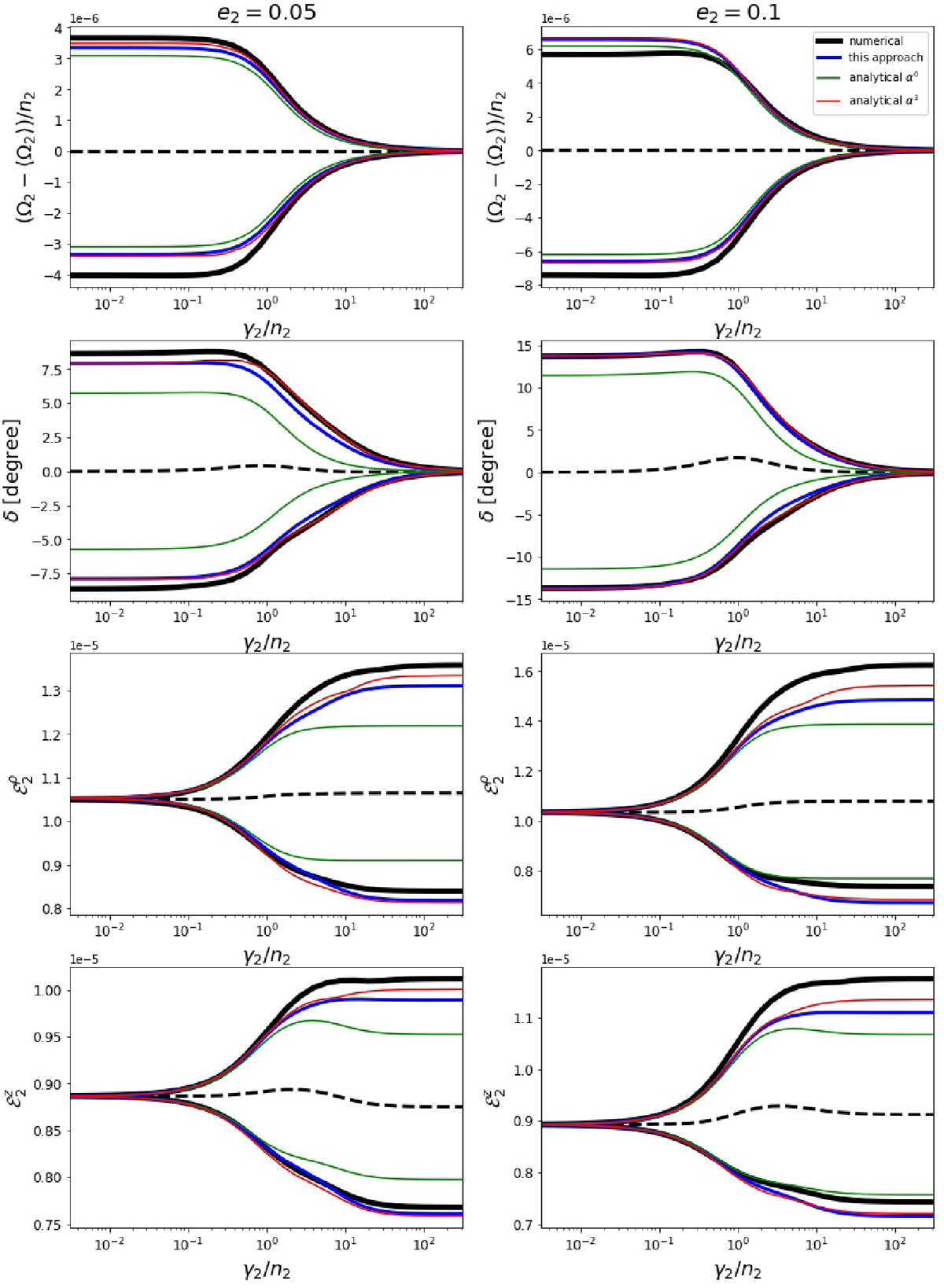Fig. A.1

Download original image
Oscillation amplitudes of the spin Ω2 (top row), the lag angle δ2 (second row), the equatorial flattening ![]() (third row), and polar flattening
(third row), and polar flattening ![]() (bottom row) of a Kepler-38-type planet around the pseudo-synchronous solution. The different colors indicate different methods of obtaining the amplitudes: numerical in black, analytical up to zeroth-order in green, up to third order in red, and our new simplified model in blue. The dashed black lines represent the numerical mean solution. The different columns represent different planetary eccentricities: e2 = 0.05 (left column) and e2 = 0.1 (right column).
(bottom row) of a Kepler-38-type planet around the pseudo-synchronous solution. The different colors indicate different methods of obtaining the amplitudes: numerical in black, analytical up to zeroth-order in green, up to third order in red, and our new simplified model in blue. The dashed black lines represent the numerical mean solution. The different columns represent different planetary eccentricities: e2 = 0.05 (left column) and e2 = 0.1 (right column).
Current usage metrics show cumulative count of Article Views (full-text article views including HTML views, PDF and ePub downloads, according to the available data) and Abstracts Views on Vision4Press platform.
Data correspond to usage on the plateform after 2015. The current usage metrics is available 48-96 hours after online publication and is updated daily on week days.
Initial download of the metrics may take a while.


